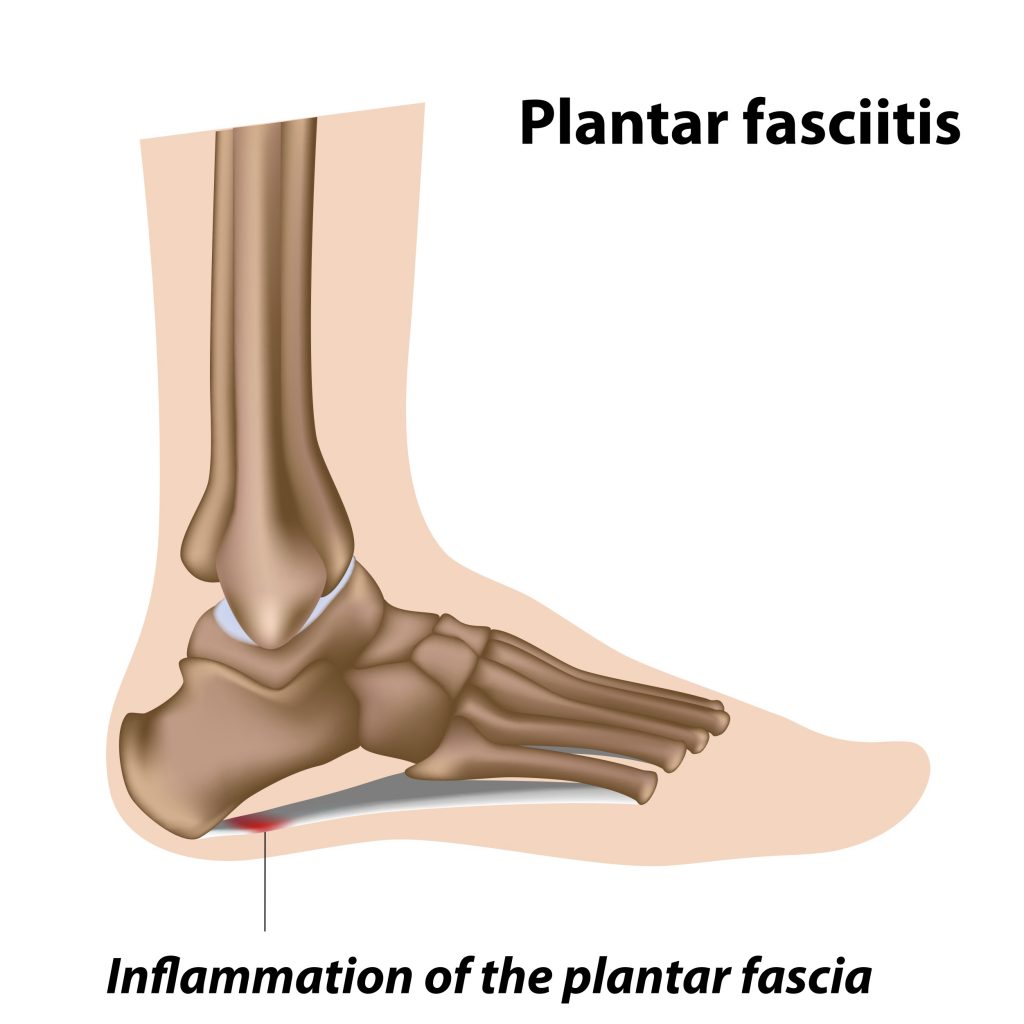
Plantar Fasciitis is a common cause of foot pain that occurs more in women than men. Mechanical dysfunction in the foot can often be the cause. It is common in runners, people who are over weight, during pregnancy or in people that wear poor footwear. The Plantar fascia plays a critical role in maintaining stability and contributing to shock absorption. “Pulling’ over a long period of time (of the plantar fascia) on the heel bone can also contribute to bone spurs
What are the signs and symptoms of Plantar fasciitis?
- Pain is most often felt on the sole of the foot and in the arch
- Pain felt when walking and weight bearing on the foot
- It is often worst first thing in the morning as the fascia has been in a shortened position for a long period of time while sleeping
- Ripping or tearing sensation on the sole of the foot
- Can often occur after wearing new shoes or bad shoes
What to do
- See your Osteopath or Physio to have a proper examination and diagnosis of the pain.
- Your Osteopath or Physio will probably apply treatment techniques to muscles in the foot that are associated with the problem, which can help healing.
- They will give you instructions on how to safely care for the injury and how to do rehabilitation exercises or stretches through to complete recovery and help to prevent re-occurrence
- Your Osteopath may suggest changes to your sport, footwear or activities that may be contributing factors.
- Sometimes a special splint worn on the foot while sleeping can be helpful.
- Take further measures to reduce inflammation ice or anti-inflammatorywhich should only be taken under direction and supervision of a healthcare professional.
- Ice massage can be done by freezing a small glass drink bottle 1/2 filled with water. Roll the frozen bottle under the sole of the foot gently applying pressure through the foot.
- Self massage with a tennis ball under the sole of the foot is good during “pain free” period to reduce re-occurrence.
What not to do
- Do not apply heat to the region.
- Do not self prescribe exercises or stretches as these may irritate the problem.
- Don’t apply deep heat creams or massage yourself.
- Don’t attempt to continue with the activity or sport that caused the injury.
How long will it take to get better?
- The condition is variable and can often be re-occurring if the initial causative factor is still present.
- The condition often re-occurs in runners and requires ongoing management and prevention.
